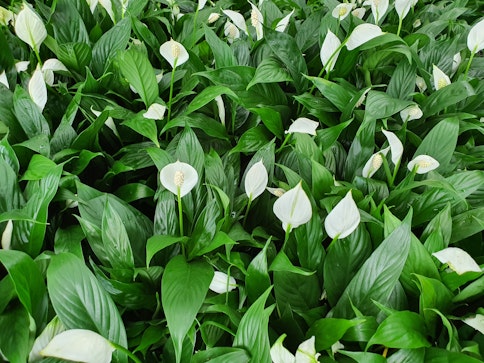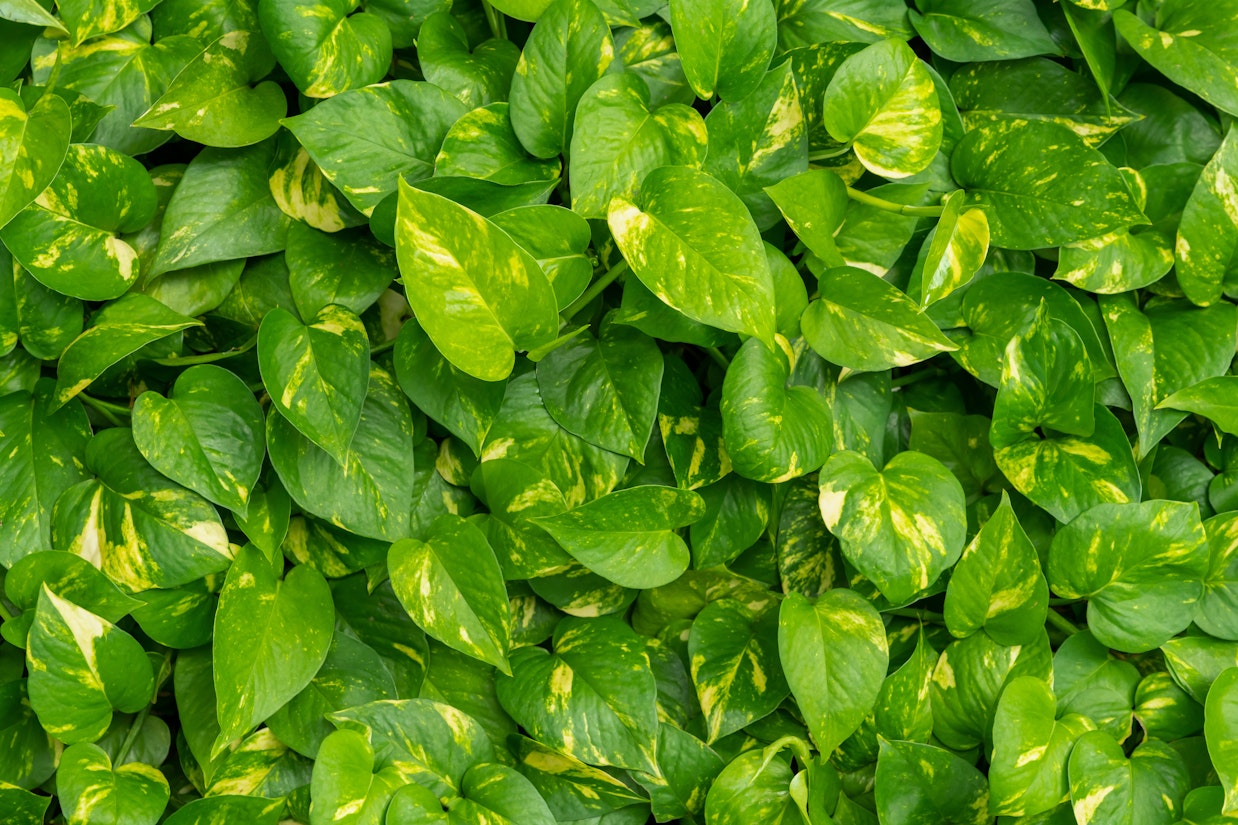
- Home
- Epipremnum - General Care

What is an Epipremnum?
Epipremnum is a genus of flowering plants in the Araceae family. They often produce long trailing vines and are famous for their heart shaped leaves and great reliability in easy to achieve conditions. They have a native range from Eastern Asia to Northern Australia and the Polynesian Islands.
Care:
Watering: Epipremnum are from humid tropical rainforests, which means that in the wild they are rarely found in totally dry soils. Keep the soil temperately damp but never soaking wet. They are somewhat drought tolerant but will suffer from over-watering. Be sure to make adjustments based on your light conditions and potting mix. In the winter, Epipremnum in the UK will enter dormancy, and watering should be reduced to as little as possible to compensate.
Potting: Epipremnum like well-draining soils. A chunky mix of coir, perlite and pine bark would be an ideal mix, as the perlite and bark stop clumping and allow water to drain through, and the bark will store excess water and allow access to stored water if ever the soil is too dry.
Light: Being forest-floor growers in the wild, Epipremnum generally do not require huge amounts of sunlight in order to grow successfully. They use the trees to support their growth and to help them reach more light. In a home environment direct sunlight would likely be far too much for them. Instead, medium light is recommended for ideal growing conditions.
Feeding: It is best to feed Epipremnum when they are exhibiting periods of active growth, to help to strengthen the new growth. Their leaves get very vivid nutrient burn if overfed, so it is best to feed only when needed. During dormancy it is recommended not to feed at all, and allow the plant to rest.
Pests: Epipremnum are particularly susceptible to thrip invasions and the stems can also be a nice feeding ground for scale insects and mealybugs! Keep your eyes out for warning signs and if discovered, treat accordingly.
Things to look out for in Epipremnum:
Underwhelming Growth: As plants with striking foliage, it is easy to tell that when a new leaf comes out shriveled, small or underwhelming. This is usually as a response to a lack of sufficient light.
Wilting: When Epipremnum get thirsty, their leaves start to lose their firmness and droop. Quite often, this will happen along a whole vine, and will be really easy to spot. If this is the case, give it a drink and it should bounce right back in the next few days.
Epipremnum species to check out:
Epipremnum aureum
Epipremnum aureum ‘Marble Queen’
Epipremnum aureum ‘Global Green’
Epipremnum aureum ‘Manjula’
Epipremnum pinnatum ‘Cebu Blue’
Jonathan Davies
Jonny has worked at Root since May 2023. His love for plants was inherited initially from his grandparents and parents, but really took off once he moved into his own place, where he started picking up small plants and was fascinated by watching how they grow and change over time. Jonny has a degree in Archaeology and Classics from the University of Sheffield, and a masters in Egyptology from Swansea University, where he primarily focused on garden culture in the ancient world, which he has managed to extend to a PhD thesis in the University of Liverpool, where he has been able to combine his love for plants with his love for ancient language and culture. Jonny loves being in the natural spaces around North Wales and Cheshire where he used to go growing up, and often spends hours examining the plants and trees, and kicking up the leaf litter searching for mushrooms and insects. He is fascinated most by plant biology, taxonomy and learning about ecosystems and interactions between plants and their environmental counterparts, and enjoys tending to his varied array of houseplants, and ongoing ‘plant projects’, such as growing plants from seeds and creating living epiphyte displays. Aside from his green thumb, his other interests include: art, reading, listening to and playing music in the company of his cats, Spooky and Boo.
More by Jonathan DaviesRelated Articles
View all articles




